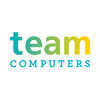Desktop Support Engineer L1 and L2
60+ Desktop Support Engineer L1 and L2 Interview Questions and Answers

Asked in Vserv Infosystems

Q. How many layers are in the OSI model, and how does it work on a network?
The OSI model has 7 layers that define how different devices communicate over a network.
The OSI model stands for Open Systems Interconnection model
Each layer has specific functions and interacts with adjacent layers
Layers include Physical, Data Link, Network, Transport, Session, Presentation, and Application
Data is passed down through the layers on the sending device and up through the layers on the receiving device
Each layer adds its own header or trailer to the data as it p...read more

Asked in TCS

Q. If a laptop is connected to a charger and receiving power, but not booting, what troubleshooting steps would you take?
Troubleshooting a non-booting laptop despite power connection involves several diagnostic steps.
Check if the power indicator light is on; if not, the charger may be faulty.
Try a different power outlet to rule out outlet issues.
Remove the battery (if removable) and connect the charger directly to the laptop.
Perform a hard reset by holding the power button for 10-15 seconds.
Listen for any beeping sounds during boot; they can indicate hardware issues.
Connect the laptop to an ext...read more
Desktop Support Engineer L1 and L2 Interview Questions and Answers for Freshers

Asked in OutworX

Q. Defrnces between rom& ram If pc is on but no display what you do& pc is not boot what you do If os is hang what you do How to solve slowness issue
RAM is volatile memory for temporary data, while ROM is non-volatile for permanent data storage in a PC.
Volatility: RAM (Random Access Memory) loses its data when power is off, while ROM (Read-Only Memory) retains data without power.
Usage: RAM is used for active processes and applications, whereas ROM stores firmware and system boot instructions.
Speed: RAM is much faster than ROM, allowing quick access to data needed for running applications.
Capacity: RAM typically has a larg...read more

Asked in Vserv Infosystems

Q. What do you know about networks and networking?
Network & networking refers to the practice of connecting computers and other devices to share resources and information.
Network refers to a collection of computers and devices connected together to share resources and information.
Networking involves the design, implementation, and management of these networks.
Types of networks include LAN (Local Area Network), WAN (Wide Area Network), and WLAN (Wireless Local Area Network).
Networking protocols like TCP/IP govern how data is ...read more

Asked in Vayam Info Solutions

Q. In network local default gateway ping drops…what are causes behind it? Can two computers connect each-other direct with straight cable for data transfer? What is the function of router?
Possible causes of network local default gateway ping drops and the function of a router.
Possible causes of network local default gateway ping drops include network congestion, faulty network cables, misconfigured network settings, or issues with the default gateway itself.
Two computers can connect to each other directly with a straight cable for data transfer using a peer-to-peer network setup.
The function of a router is to connect multiple networks together and forward data...read more

Asked in VDart

Q. what is OS and how to install OS?
OS stands for Operating System. It is a software that manages computer hardware and provides common services for computer programs.
An OS is the most important software that runs on a computer.
It manages the computer's memory, processes, and all of its software and hardware.
To install an OS, you need to boot the computer from a bootable installation media such as a USB drive or a DVD.
Follow the on-screen instructions to select the language, time zone, and other settings before...read more
Desktop Support Engineer L1 and L2 Jobs


Asked in NR Technoserve

Q. What is DHCP server ? How to Configuration windows 2019 or windows XP.? What is Troubleshooting? What is Ticketing Tools?
DHCP server assigns IP addresses to devices on a network. Configuration involves setting up IP address range, subnet mask, gateway, DNS servers. Troubleshooting involves checking DHCP server settings, network connectivity. Ticketing tools are used to track and manage support requests.
DHCP server assigns IP addresses automatically to devices on a network
Configuration involves setting up IP address range, subnet mask, gateway, DNS servers
Troubleshooting includes checking DHCP s...read more

Asked in OutworX

Q. What is ipcong What is pst & ost What is ad&dns&DHCP What is office 365
IPConfig is a command-line tool for network configuration, while PST and OST are file formats for Outlook data storage.
IPConfig: A command-line tool used in Windows to display and manage network settings, such as IP address and subnet mask.
PST (Personal Storage Table): A file format used by Microsoft Outlook to store emails, contacts, and calendar events locally.
OST (Offline Storage Table): A file format used by Outlook to store a synchronized copy of mailbox data from an Exc...read more
Share interview questions and help millions of jobseekers 🌟


Asked in Vayam Info Solutions

Q. What is use of active directory FTP DNS DHCP server
Active Directory is used for centralized management of network resources. FTP is used for file transfer. DNS is used for name resolution. DHCP is used for automatic IP address assignment.
Active Directory: Centralized management of network resources, user authentication, and security policies.
FTP: File transfer protocol used for transferring files between a client and a server.
DNS: Domain Name System used for translating domain names to IP addresses.
DHCP: Dynamic Host Configur...read more

Asked in Inspirisys Solution

Q. If a computer's audio is not working, what would you check first?
Check the volume settings and audio output device.
Check if the volume is muted or turned down
Ensure the correct audio output device is selected
Check if the audio drivers are up to date
Restart the computer and check again
Try using headphones or external speakers to isolate the issue

Asked in Infiniminds

Q. How do you troubleshoot laptop and desktop issues using different accessories?
To work with laptops and desktops using different accessories, you can connect peripherals like keyboards, mice, monitors, and external storage devices.
Connect a keyboard and mouse for input
Connect a monitor for display
Connect external storage devices for additional storage capacity
Use docking stations for easy connectivity with multiple accessories
Utilize USB hubs to connect multiple devices to a single port

Asked in Veradigm

Q. what is latest configuration for the computer? what is the current RAM standard
The latest configuration for a computer varies depending on the manufacturer and model. The current RAM standard is DDR4.
The latest configuration for a computer depends on the manufacturer and model
Some common configurations include Intel Core i7 or i9 processors, solid-state drives, and dedicated graphics cards
The current RAM standard is DDR4, which offers faster speeds and higher capacities than previous standards like DDR3
Some high-end systems may use DDR5 RAM, but this is...read more

Asked in 3i Infotech

Q. What domain, how to configuration outlook,
To configure Outlook, you need to know the domain name and server settings.
Open Outlook and go to File > Account Settings > Account Settings
Click on New to add a new email account
Enter your name, email address, and password
Select the account type (POP or IMAP) and enter the incoming and outgoing server settings
Click on Test Account Settings to ensure everything is working properly
Click on Finish to complete the setup process

Asked in eClerx

Q. What is the difference between a service request and an incident?
Service requests are user-initiated tasks, while incidents are unplanned interruptions in service.
Service Request: A user asks for a new software installation.
Incident: A user reports that their email is not working.
Service Request: Requesting access to a shared drive.
Incident: A printer is malfunctioning and not printing documents.
Service Requests are typically planned and can be scheduled, while Incidents require immediate attention.

Asked in Vserv Infosystems

Q. What is the use of APIPA on a network?
APIPA stands for Automatic Private IP Addressing and is used when a device cannot obtain an IP address from a DHCP server.
APIPA assigns a unique IP address to a device when it cannot connect to a DHCP server.
It allows devices to communicate on a local network even without a DHCP server.
APIPA addresses are in the range of 169.254.0.1 to 169.254.255.254.
It is commonly used in small home or office networks where a DHCP server is not available.

Asked in NR Technoserve

Q. What is ADDS? nd hot it will be worked
ADDS stands for Active Directory Domain Services. It is a directory service provided by Microsoft for Windows domain networks.
ADDS is used to manage users, computers, and other devices on a network.
It allows administrators to set up and manage security policies, install software, and perform other tasks across the network.
ADDS uses a hierarchical structure with domains, trees, and forests to organize network resources.
Example: Creating user accounts, assigning permissions, an...read more

Asked in Dixit Infotech Services

Q. What is DHCP, DNS , and Active directory?
DHCP assigns IP addresses dynamically, DNS translates domain names to IPs, and Active Directory manages network resources and users.
DHCP (Dynamic Host Configuration Protocol): Automatically assigns IP addresses to devices on a network, e.g., a router assigning IPs to computers.
DNS (Domain Name System): Translates human-readable domain names (like www.example.com) into IP addresses that computers use to identify each other.
Active Directory: A directory service for Windows doma...read more

Asked in Maharishi Vidya Mandir

Q. How many types of networks are there?
There are mainly three types of networks: LAN, WAN, and MAN.
Local Area Network (LAN) - used to connect devices within a limited area like a home, office, or school.
Wide Area Network (WAN) - connects devices over a large geographical area, often using public infrastructure like the internet.
Metropolitan Area Network (MAN) - covers a larger area than a LAN but smaller than a WAN, typically within a city.

Asked in VDart

Q. How do you troubleshoot a LAN?
To troubleshoot LAN, check physical connections, verify network settings, restart devices, check for IP conflicts, and use network monitoring tools.
Check physical connections to ensure cables are securely connected
Verify network settings such as IP address, subnet mask, and default gateway
Restart devices such as routers, switches, and computers
Check for IP conflicts by ensuring no two devices have the same IP address
Use network monitoring tools like Wireshark to analyze netwo...read more

Asked in Vayam Info Solutions

Q. How do you corrupt an operating system and back up data?
It is unethical and against professional standards to intentionally corrupt an operating system and backup data.
Intentionally corrupting an operating system and backup data is unethical and against professional standards.
As a Desktop Support Engineer, the focus should be on troubleshooting and resolving issues, not causing harm.
Instead of corrupting the OS, it is important to have proper backup and recovery procedures in place to protect data.
Educating users about the importa...read more

Asked in Vserv Infosystems

Q. What did know about OSI model?
The OSI model is a conceptual framework that standardizes the functions of a telecommunication or computing system into seven different layers.
The OSI model stands for Open Systems Interconnection model.
It helps in understanding how data is transferred from one computer to another over a network.
Each layer has specific functions and interacts with adjacent layers.
Examples of layers include Physical layer, Data Link layer, Network layer, Transport layer, Session layer, Present...read more

Asked in Vayam Info Solutions

Q. What is the OSI model and how does it work?
The OSI model is a conceptual framework that defines the functions of a network protocol stack.
The OSI model consists of seven layers: Physical, Data Link, Network, Transport, Session, Presentation, and Application.
Each layer has specific functions and interacts with the layers above and below it.
The model helps in understanding how different network protocols and technologies work together.
For example, the Physical layer deals with the physical transmission of data, while th...read more

Asked in VDart

Q. How do you create a restore point?
Restore points can be created in Windows by accessing the System Protection settings.
Open Control Panel and go to System and Security.
Click on System and then on System Protection.
Select the drive you want to create a restore point for and click on 'Create'.
Give the restore point a name and click 'Create'.

Asked in VDart

Q. What is the purpose of BIOS and why is it installed?
BIOS is a firmware installed on a computer's motherboard that initializes hardware components and boots up the operating system.
BIOS stands for Basic Input/Output System
It is responsible for initializing and testing hardware components during the boot process
BIOS also provides a platform for configuring hardware settings
It loads the operating system into the computer's memory and hands over control to it
BIOS settings can be accessed and modified through a BIOS setup utility

Asked in Tech Mahindra

Q. What is the ping command?
Ping command is a network utility tool used to test the reachability of a host on an IP network.
Ping command sends ICMP echo request packets to the target host and waits for a response.
It measures the round-trip time for packets to reach the destination and come back.
Ping is commonly used to troubleshoot network connectivity issues.
Example: 'ping www.google.com' will send ICMP packets to Google's server and display the response times.

Asked in Movate

Q. What is the Blue Screen of Death?
Blue Screen of Death (BSoD) is a Windows operating system error screen that appears when a system encounters a critical error that it cannot recover from.
BSoD is also known as a stop error or bug check screen.
It usually includes a specific error code and a message indicating the cause of the error.
Common causes of BSoD include hardware failures, driver issues, and software conflicts.
Examples of BSoD error codes are: 0x0000007B (INACCESSIBLE_BOOT_DEVICE), 0x0000001A (MEMORY_MA...read more
Asked in Cm Solution

Q. What is a BSOD error and how can you fix it?
BSOD (Blue Screen of Death) error is a system error that causes a blue screen to appear on Windows computers, indicating a critical system error.
BSOD error is a system error that causes a blue screen to appear on Windows computers
It indicates a critical system error that needs to be resolved
Common causes of BSOD errors include hardware issues, driver conflicts, and software problems
To fix BSOD errors, you can try restarting the computer, updating drivers, running system diagn...read more

Asked in Dr Lal PathLabs

Q. What do you know about Active Directory?
Active Directory is a directory service by Microsoft for Windows domain networks, managing users, computers, and resources.
Centralized management of user accounts and permissions.
Supports Group Policy for enforcing security settings across devices.
Facilitates single sign-on (SSO) for accessing multiple resources.
Organizes resources in a hierarchical structure using domains, trees, and forests.
Example: Users can be grouped into Organizational Units (OUs) for easier management.

Asked in Vayam Info Solutions

Q. How do you configure a network printer?
To configure a network printer, you need to connect it to the network, install the printer driver, and set up the printer on each computer.
Connect the printer to the network using an Ethernet cable or Wi-Fi.
Install the printer driver on the computer by either using the installation CD or downloading it from the manufacturer's website.
Open the Control Panel on the computer, go to Devices and Printers, and click on 'Add a printer'.
Select 'Add a network, wireless, or Bluetooth p...read more

Asked in Team Computers

Q. What is the command to check the system's MAC address?
Use 'ipconfig /all' on Windows or 'ifconfig'/'ip a' on Linux to check the system's MAC address.
On Windows, open Command Prompt and type 'ipconfig /all'. Look for 'Physical Address'.
On Linux, use 'ifconfig' or 'ip a' in the terminal. Look for 'ether' under the relevant network interface.
On macOS, use 'ifconfig' in the terminal and find 'ether' for the MAC address.
Interview Questions of Similar Designations
Interview Experiences of Popular Companies





Top Interview Questions for Desktop Support Engineer L1 and L2 Related Skills

Calculate your in-hand salary
Confused about how your in-hand salary is calculated? Enter your annual salary (CTC) and get your in-hand salary


Reviews
Interviews
Salaries
Users










